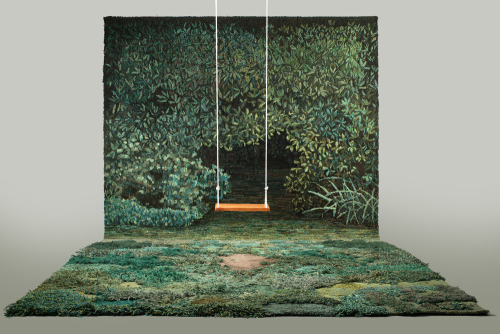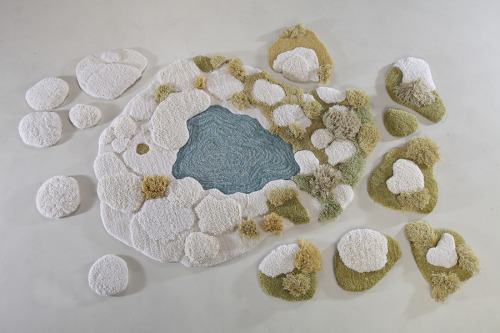Fun Facts About Mars
Fun Facts About Mars

Mars is a cold desert world, and is the fourth planet from the sun. It is half the diameter of Earth and has the same amount of dry land. Like Earth, Mars has seasons, polar ice caps, volcanoes, canyons and weather, but its atmosphere is too thin for liquid water to exist for long on the surface. There are signs of ancient floods on the Red Planet, but evidence for water now exists mainly in icy soil and thin clouds.

Earth has one, Mars has two…moons of course! Phobos (fear) and Deimos (panic) are the Red Planet’s two small moons. They are named after the horses that pulled the chariot of the Greek war god Ares, the counterpart to the Roman war god Mars.

The diameter of Mars is 4220 miles (6792 km). That means that the Red Planet is twice as big as the moon, but the Earth is twice as big as Mars.

Since Mars has less gravity than Earth, you would weigh 62% less than you do here on our home planet. Weigh yourself here on the Planets App. What’s the heaviest thing you’ve ever lifted? On Mars, you could have lifted more than twice that! Every 10 pounds on Earth only equals 4 pounds on the Red Planet. Find out why HERE.

Mass is the measurement of the amount of matter something contains. Mars is about 1/10th of the mass of Earth.

Mars and Earth are at their closest point to each other about every two years, with a distance of about 33 million miles between them at that time. The farthest that the Earth and Mars can be apart is: 249 million miles. This is due to the fact that both Mars and Earth have elliptical orbits and Mars’ orbit is tilted in comparison with the Earth’s. They also orbit the sun at different rates.

The temperature on Mars can be as high as 70 degrees Fahrenheit (20 degrees Celsius) or as low as about –225 degrees Fahrenheit (-153 degrees Celsius). How hot or cold the surface varies between day and night and among seasons. Mars is colder than Earth because it is farther from the sun.

You know that onions have layers, but did you know that Mars has layers too? Like Earth, Mars has a crust, a mantle and a core. The same stuff even makes up the planet layers: iron and silicate.

Ever wonder why it’s so hard launching things to space? It’s because the Earth has a log of gravity! Gravity makes things have weight, and the greater the gravity, the more it weights. On Mars, things weigh less because the gravity isn’t as strong.

Take a deep breath. What do you think you just breathed in? Mostly Nitrogen, about a fifth of that breath was Oxygen and the rest was a mix of other gases. To get the same amount of oxygen from one Earth breath, you’d have to take around 14,500 breaths on Mars! With the atmosphere being 100 times less dense, and being mostly carbon dioxide, there’s not a whole lot of oxygen to breathe in.

Mars has about 15% of Earth’s volume. To fill Earth’s volume, it would take over 6 Mars’ volumes.
For more fun Mars facts, visit HERE.
Make sure to follow us on Tumblr for your regular dose of space: http://nasa.tumblr.com
More Posts from 7w1x-blog and Others




Microsoft announces all the things
Nowadays, Microsoft is a serious consumer electronics device vendor and the company presented a load of hardware at its October 6th event:
- A developer version of the VR HoloLens will be available in Q1-2016 for $ 3,000. Cool!
- An new version of the Microsoft Band is ready. The wearable band now has Cortina integration, a curved gorilla glass display and the device is fully packed with fitness centric features such as continuous heart rate monitoring, UV monitoring, GPS, a barometer and Microsoft Health integration. The Microsoft Band can be preordered today for $250 and it will be available at the end of October.
- Microsoft unveiled three new Windows 10 Lumia phones including the high-end 950 ($550) and 950XL ($650) devices and the budget Lumia 550 ($140). The 950 devices feature USB-C connectors, 5.2” or 5.7” high resolution OLED displays, 20 MP cameras with optical image stabilisation, 32GB of storage and support for additional SD card storage. The devices will be out at the end of November. Reasonable specs for high-end devices, but I’ve been burned before by Microsoft’s mobile eco system.
- The Microsoft Surface Pro 4 is the company’s new tablet. The device fits a larger 12.3” 2,736 x 1,824 resolution display in the same design foot print as last years’ Surface Pro 3. The Surface Pro is 30 percent faster than the SP3 and comes with an updated Surface Pen. The pen features 1,024 levels of pressure sensitivity, one year battery life and nifty magnetic storage. The new and slimmer Type Cover has a 40 percent larger glass track pad and updated key mechanism compared to previous models. The Surface Pro 4 will be available at the end of October with prices starting at at $899.
- The big surprise of the event was the Microsoft Surface Book, the company’s first lap top. The convertible notebook has a 13.5” 3000 x 2000 resolution touch screen and Microsoft said it was pound for pound, the fastest laptop in the world. It can be yours for $1499 and pre orders start today. The Surface Book looks nice and the “fulcrum hinge” enables the device to bend in all kinds of positions even though it actually won’t let you fully close the lid.

Way back in 1977 something amazing happened (apart from the release of Star Wars obviously). Astronomer Jerry Ehman was using the Ohio State University’s Big Ear radio telescope to sweep the sky for possible signals from extraterrestrial civilisations. He found something.
While pointing towards a grouping of stars called Chi Sagittarii on 15 August, he received a powerful blast of radio waves that lasted for 72 seconds. He circled it on the readout and wrote: “Wow!”
Analysis of the signal showed that it displayed all the hallmarks of coming from interstellar space, and it became something of a cause célèbre for those involved in SETI, the search for extraterrestrial intelligence.
The trouble is that despite numerous attempts, the signal has never been observed again and so remains unexplained. Until now perhaps, thanks to the work of Professor Antonio Paris of St Petersburg College, Florida.
Continue Reading.



Pae White.






Argentinian artist Alexandra Kehayoglou designs wool rugs and carpets that mimic textures found in nature, such as moss, sand, water, and trees.
(Source | Instagram)




In Japan, manhole covers are decorated with intricate art pieces.
(Artist)
-
 ishroux liked this · 2 years ago
ishroux liked this · 2 years ago -
 iwillruletheuniverse reblogged this · 3 years ago
iwillruletheuniverse reblogged this · 3 years ago -
 ohfallingstar reblogged this · 3 years ago
ohfallingstar reblogged this · 3 years ago -
 parody-the-emi liked this · 4 years ago
parody-the-emi liked this · 4 years ago -
 tinkyrubi liked this · 5 years ago
tinkyrubi liked this · 5 years ago -
 anjaelamica-blog liked this · 5 years ago
anjaelamica-blog liked this · 5 years ago -
 whynotramble liked this · 5 years ago
whynotramble liked this · 5 years ago -
 the-rose-of-versailles reblogged this · 5 years ago
the-rose-of-versailles reblogged this · 5 years ago -
 superlucyjin reblogged this · 5 years ago
superlucyjin reblogged this · 5 years ago -
 robosparky liked this · 5 years ago
robosparky liked this · 5 years ago -
 fahidbaby liked this · 5 years ago
fahidbaby liked this · 5 years ago -
 notaplatebutatrey liked this · 6 years ago
notaplatebutatrey liked this · 6 years ago -
 lestat-gontier liked this · 6 years ago
lestat-gontier liked this · 6 years ago -
 cmay123 reblogged this · 6 years ago
cmay123 reblogged this · 6 years ago -
 cmay123 liked this · 6 years ago
cmay123 liked this · 6 years ago -
 porewit reblogged this · 6 years ago
porewit reblogged this · 6 years ago -
 almassa liked this · 6 years ago
almassa liked this · 6 years ago -
 deathbreast liked this · 6 years ago
deathbreast liked this · 6 years ago -
 coffeefrenchandhistory reblogged this · 6 years ago
coffeefrenchandhistory reblogged this · 6 years ago -
 coffeefrenchandhistory liked this · 6 years ago
coffeefrenchandhistory liked this · 6 years ago -
 shy-and-reserved reblogged this · 6 years ago
shy-and-reserved reblogged this · 6 years ago -
 joslynuniverse liked this · 6 years ago
joslynuniverse liked this · 6 years ago -
 twisted-falcon liked this · 6 years ago
twisted-falcon liked this · 6 years ago -
 cute-smol-geek liked this · 6 years ago
cute-smol-geek liked this · 6 years ago -
 grumpyhedgehogs reblogged this · 6 years ago
grumpyhedgehogs reblogged this · 6 years ago -
 gabriel4sam reblogged this · 6 years ago
gabriel4sam reblogged this · 6 years ago -
 gabriel4sam liked this · 6 years ago
gabriel4sam liked this · 6 years ago



